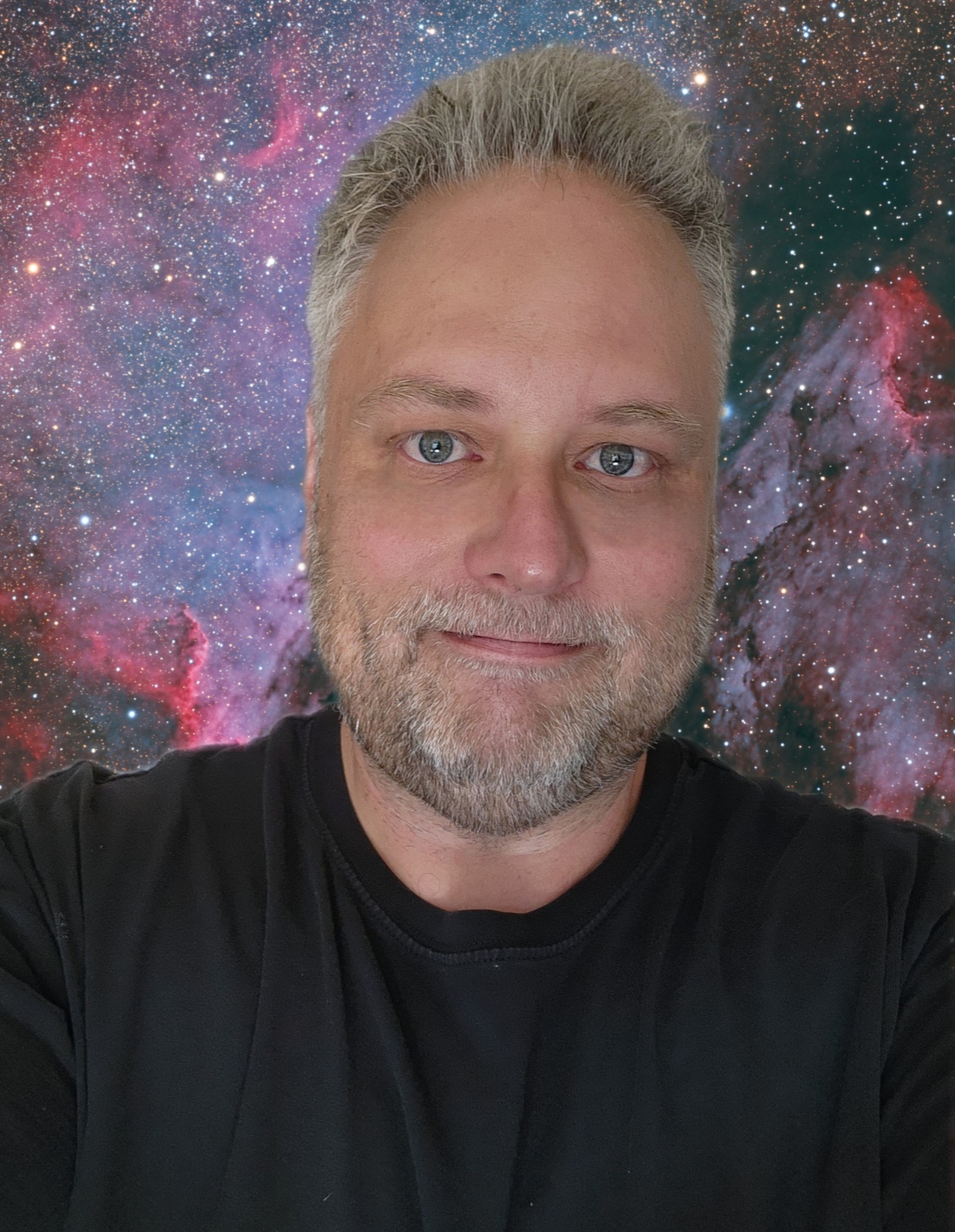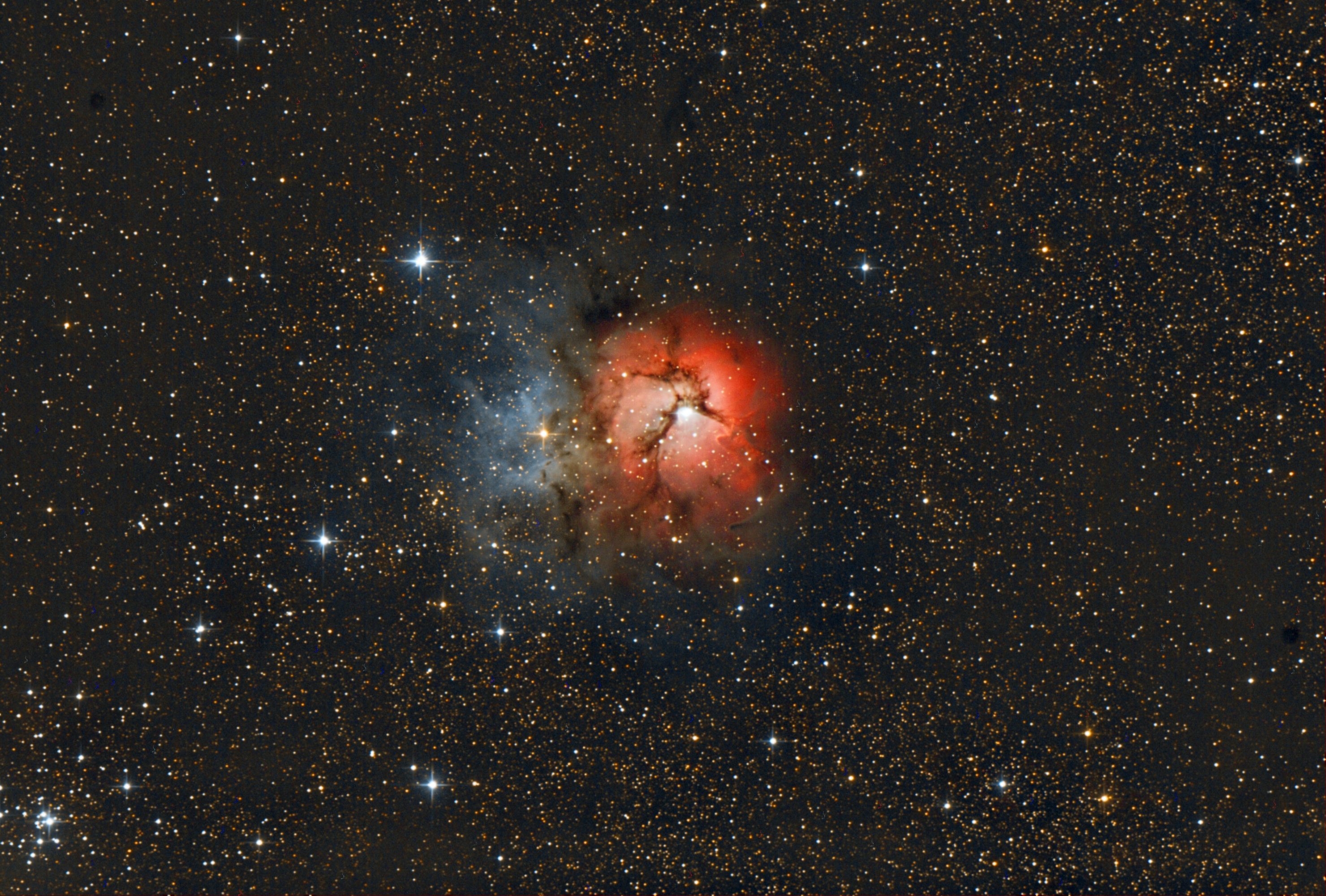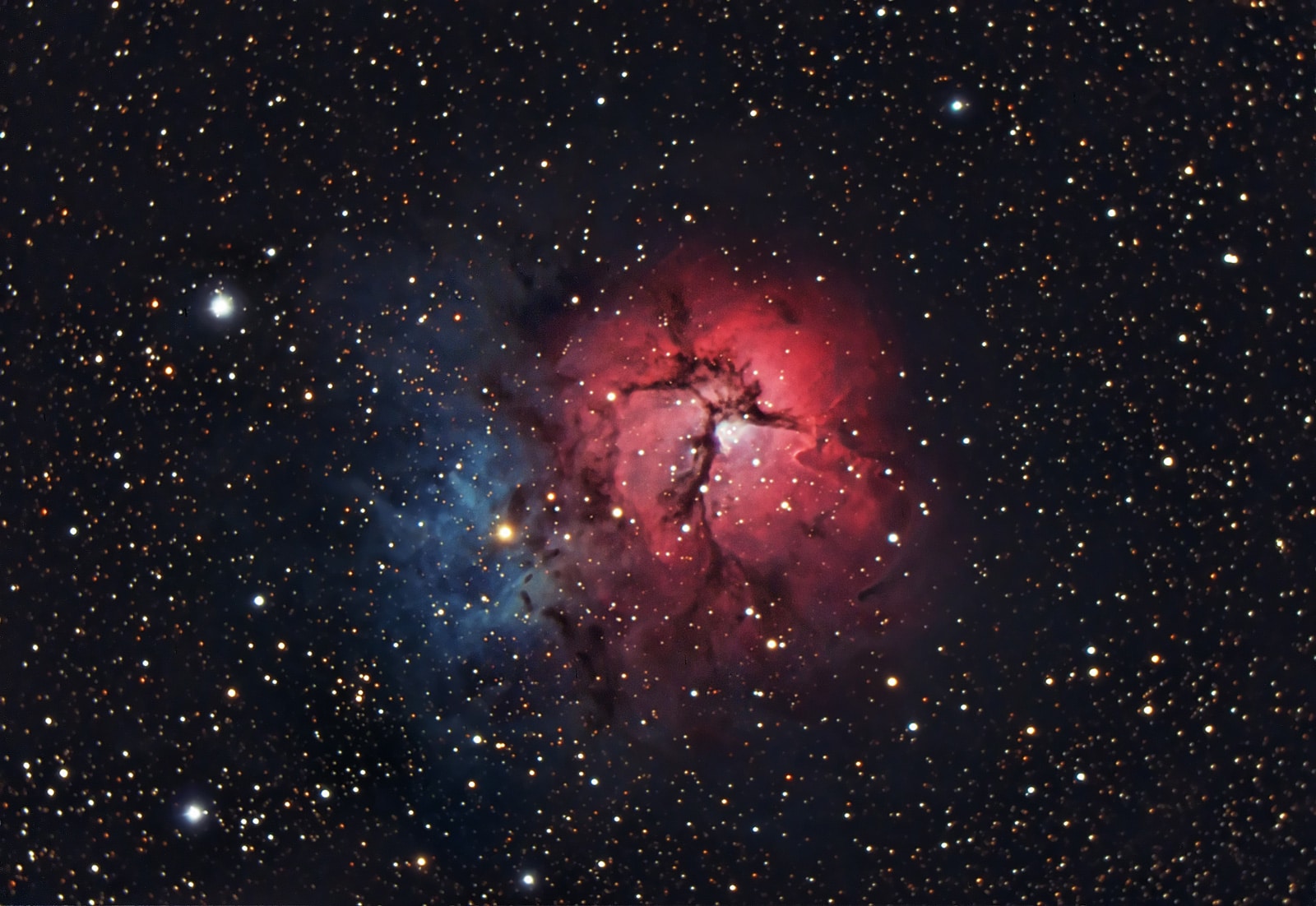No products in the cart.
M20 The Trifid Nebula is a magnificent and very interesting nebula. It’s an unusual combination of an open cluster of stars; an emission nebula (red portion), a reflection nebula (blue portion) and a dark nebula (the apparent ‘gaps’ within the emission nebula that cause the trifid appearance; these are also designated Bernard 85).
Below is one of the first processing results of this image data:
M20 is in the constellation of Sagittarius, the teapot, and sits just a little ways (from our perspective anyhow) above the Lagoon Nebula M8. The Lagoon Nebula is actually visible with the naked-eye from dark locations.
I imaged M20 in the early morning hours of June 15 from our dark site location near Listowel, Ontario. From this location in southern Ontario, M20 starts to rise above the horizon not long after sunset now. It’s not ideally positioned though in the sky until around 1 am when it emerges from the light dome of light pollution (or “soup” as I call it sometimes) emanating from the cities of Kitchener and Waterloo that affect our night skies even being 50km away.
Below is another process version of this M20 data which I cropped more to focus on the nebula. I also liked the colours better in this one:
Once M20 is out of the light pollution, it’s in a better position to image through a telescope. The colours and details are not washed out and there is much better contrast between the the object itself and the sea of stars surrounding it. The location of M20 within one of the arms of our own Milky Way galaxy, close to the core of our galaxy, provides for a rich backdrop of stars to compliment this amazing nebula.
Interesting enough, this is only 1-hour of data (exposure time). I had actually taken 2-hours of data this night, but due to some tracking issues not every exposure/frame was usable. The fast focal ratio and large 10inch mirror of the Orion 10″ astrograph makes it possible to capture a lot of light more quickly from these distant and ancient clouds of gas and dust.
Technical:
- Orion 10″ astrogaph, F3.9
- Skywatcher EQ6
- Canon DSLR 350XT (Rebel), Ha modified
- Nebulosity and PHD, Orion Autoguider
- Processed in PS
- Total time 1 hour

My story began more than 40 years ago looking up at the Moon with a small telescope my Father had. Encouraged by my parents, who bought me my very own telescope, a 4.5″ reflector, I began to explore the night sky from my family home backyard. Today I do astrophotography from my home in Kitchener, Ontario and also with remote telescopes located in New Mexico and Australia. Some of my images have won awards and have been featured online and in magazines.




Leave a comment...